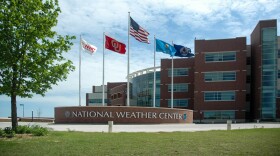Michael Biggerstaff is a professor of meteorology at the College of Atmospheric and Geographic Sciences at OU. He and his team made the trip to Louisiana to deploy two Shared Mobile Atmospheric Research and Teaching, or SMART, weather radars.
The researchers collected data for more than 24 hours and also deployed other small weather instruments to capture atmospheric conditions.
Biggerstaff said the hurricane went through a process known as an eye wall replacement cycle that helped prevent more damage.
“Ida was undergoing an eyewall replacement cycle during landfall that caused the inner eyewall and associated wind field to weaken just before landfall,” Biggerstaff said. “The OU radar team observed the eyewall replacement process and how that process was impacted by increased surface friction during landfall.”
He says what makes this hurricane stand out from the numerous others he’s studied is the amount of time that his team was able to observe this process.
“This is the first time the process of an eyewall replacement cycle at landfall has been observed at such high temporal and spatial scales and should help improve forecasts of this process, which is responsible for significant changes in storm intensity over time scales of a few hours.”
In addition, the research, funded by the National Institute for Standards and Technology, will be used to improve building codes to mitigate damage caused by future storms.
KGOU is a community-supported news organization and relies on contributions from readers and listeners to fulfill its mission of public service to Oklahoma and beyond. Donate online, or by contacting our Membership department.








